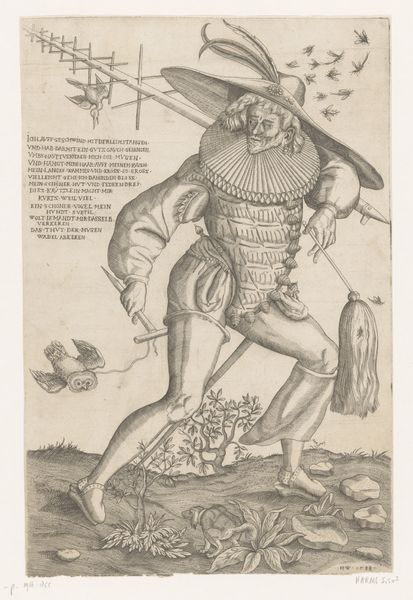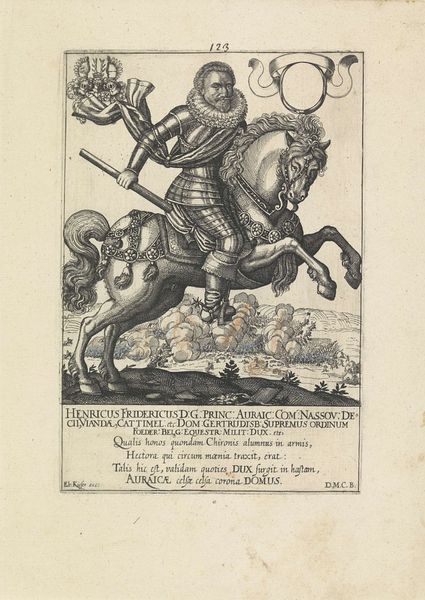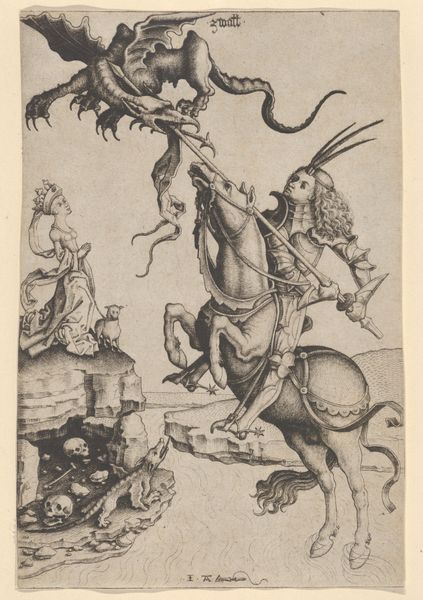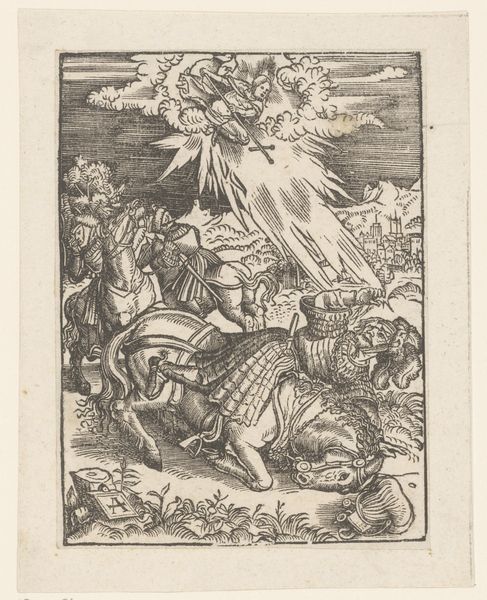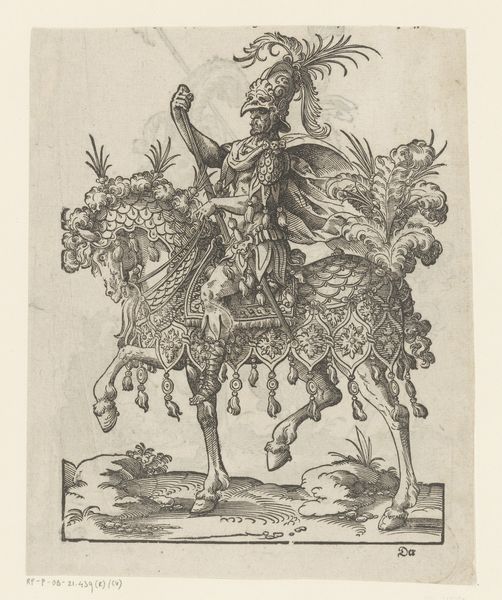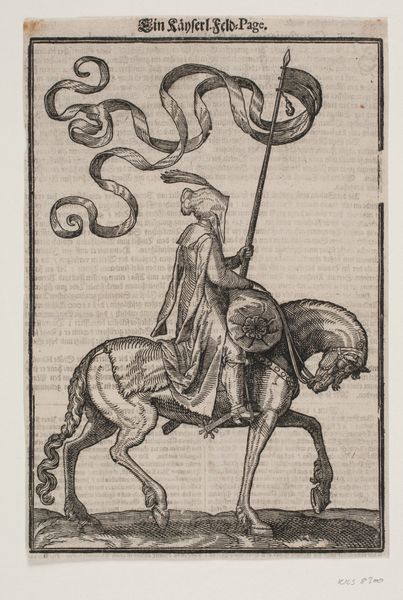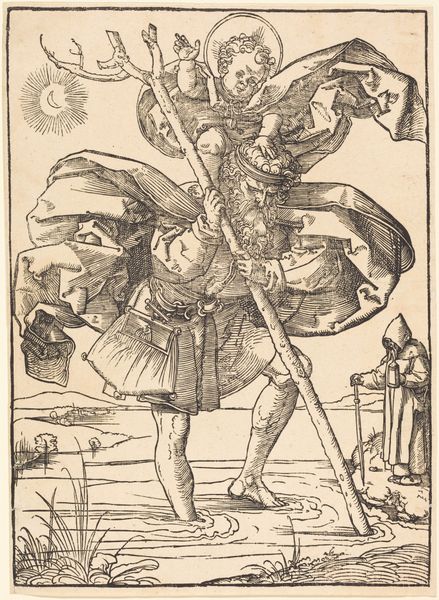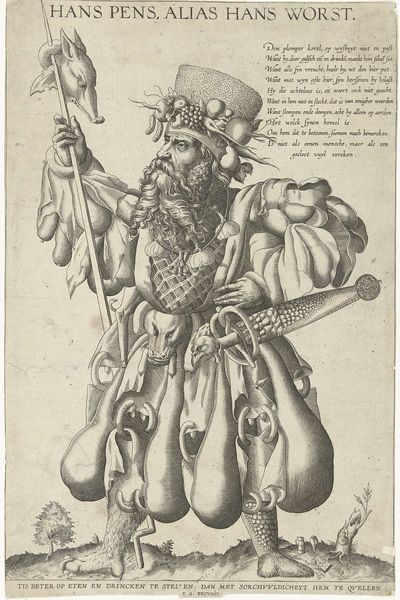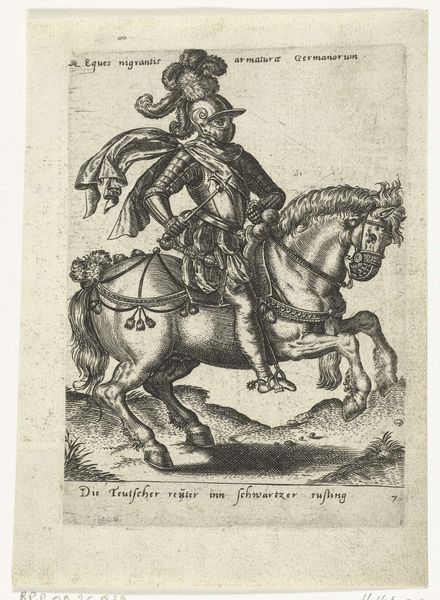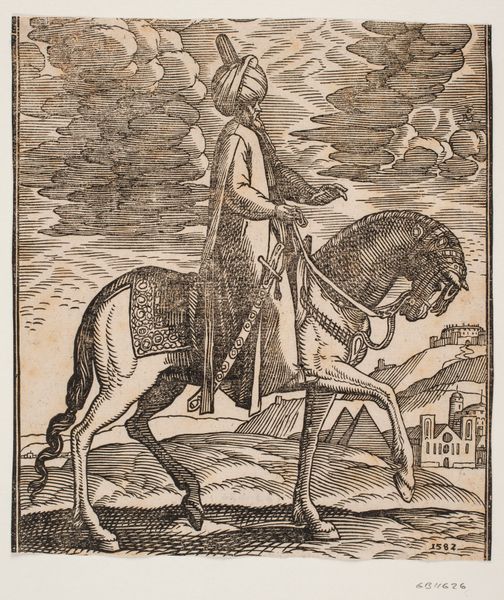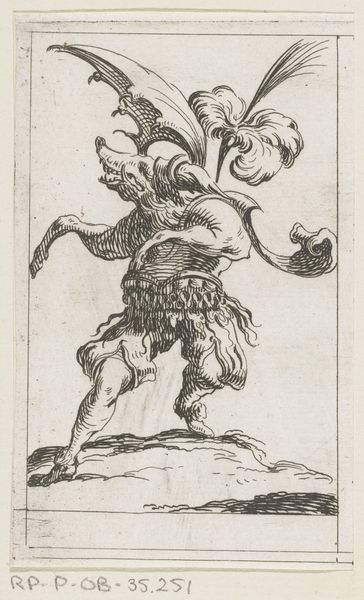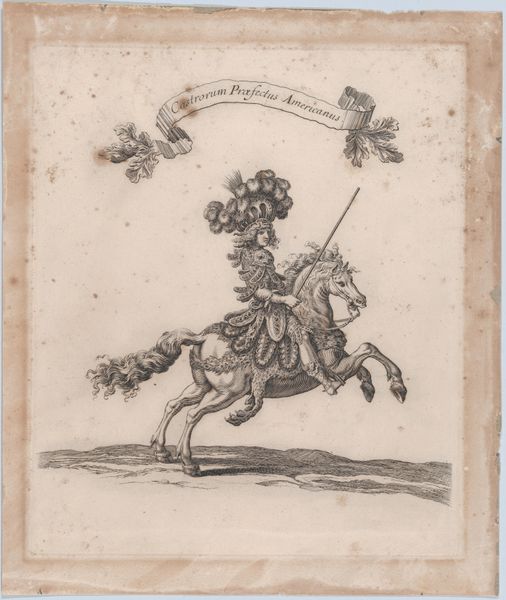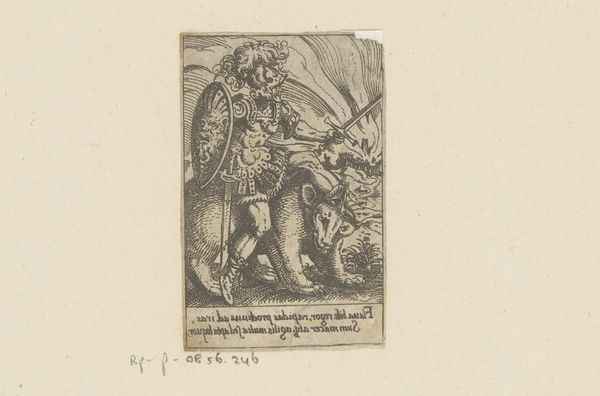
print, engraving
#
narrative-art
# print
#
pen sketch
#
old engraving style
#
figuration
#
northern-renaissance
#
engraving
Dimensions: height 335 mm, width 213 mm
Copyright: Rijks Museum: Open Domain
Editor: This is *Lijmstokloper*, or "Lime Rod Walker," an engraving from 1588 by Heinrich Wirich, housed at the Rijksmuseum. What strikes me is how oddly dressed and equipped the central figure is. He seems to be weighted down with the tools of bird-catching, yet his clothes suggest wealth. How do you interpret this work? Curator: Well, on the surface, we see a figure equipped for a hunt, but considering the social context of the late 16th century, we can interpret this as a critique of societal folly. The "Lime Rod Walker" likely symbolizes those caught in earthly pursuits and foolish desires, much like birds are trapped by the sticky lime. Consider the opulence of his attire against the apparent absurdity of his task – a sharp contrast highlighting the vanity and misguided priorities of the elite. Editor: So, it's a commentary on class and privilege, perhaps? Is Wirich suggesting that the wealthy are just as susceptible to foolishness as anyone else? Curator: Precisely. Think about the rising merchant class and their pursuit of status. This image would speak to that specific moment. Wirich seems to question where they place their value, equating chasing fleeting pleasures to trapping birds. The numerous textual inscriptions reinforces the connection between worldly desires and their inevitable downfall, but also point to a potential liberation from such entrapments through the recognition of true freedom in a divine existence. What's more interesting is to ask: what exactly does 'freedom' signify for people living at the edge of modernity? Editor: That really reframes my understanding. I was focusing too much on the literal imagery without considering the historical and philosophical context. Curator: That is an excellent starting point though, and by combining careful observation and a sense of history, the print now reveals layers of meaning connected to the human condition, as pertinent then as it is today. Editor: Absolutely. Now I see the social commentary more clearly and I appreciate Wirich's ability to embed such layers of meaning into a seemingly simple image. Curator: Indeed. It reminds us to look beyond the surface, and examine art through an intersectional lens that acknowledges historical realities and contemporary values.
Comments
No comments
Be the first to comment and join the conversation on the ultimate creative platform.
